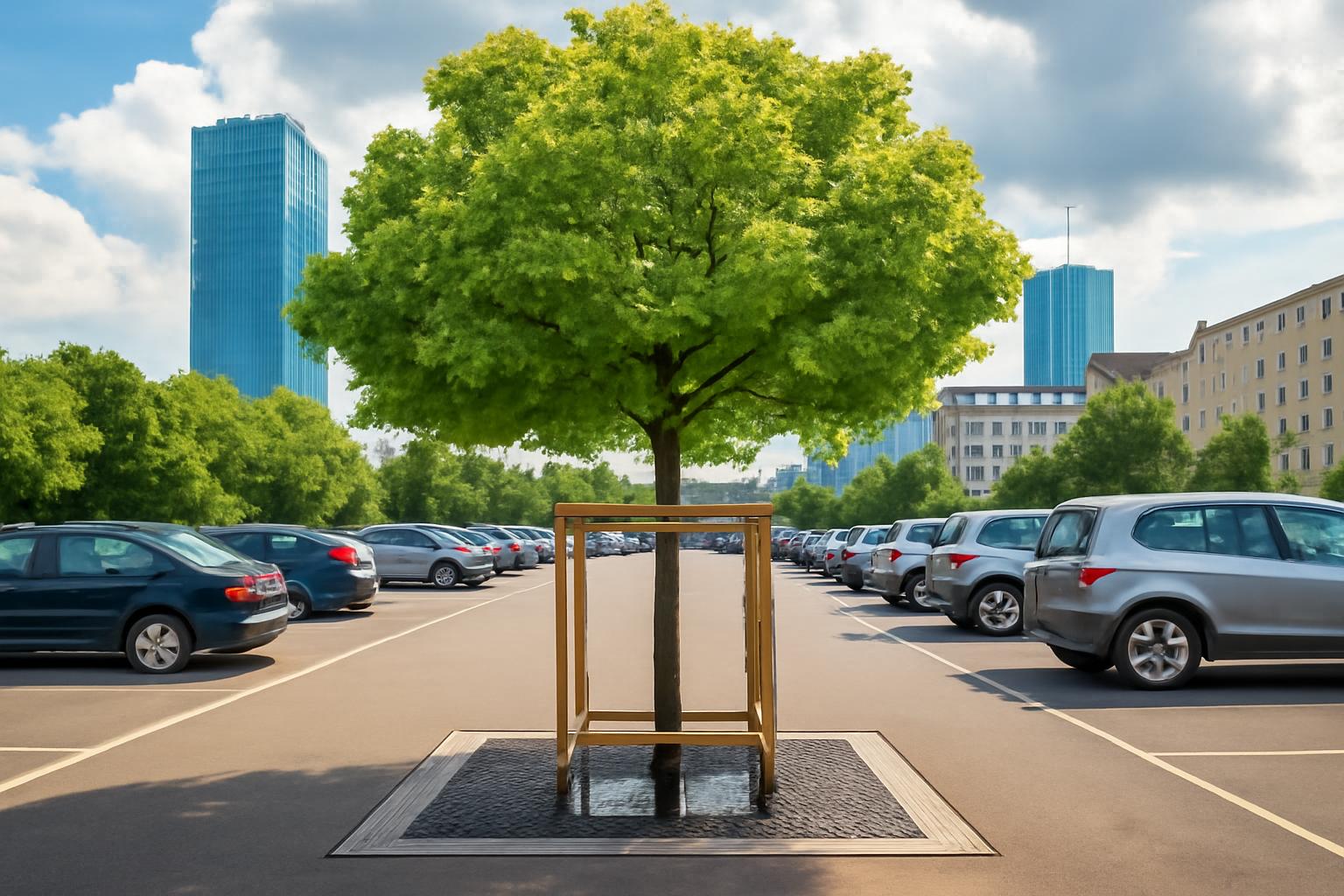The investigation surveyed parking lots larger than 900 square meters in six German cities—Braunschweig, Mannheim, Hannover, Stuttgart, Frankfurt, and Cologne—using satellite data, city plans, and AI-assisted analysis to see whether local development rules mandate tree planting and, crucially, whether those rules are actually enforced. The findings travel in a curious fingerprint of inconsistency: Hannover, long accustomed to a rule requiring a large-canopy tree for every six parking spaces since the 1990s, sits among grey sea of still-sealed ground, where green ambitions struggle against hydrology and land use that prefer permanence over shade. Mannheim, by contrast, is almost entirely a seal of about 75 percent, with a central grid that stifles air movement and cooling. Frankfurt benefits from a southern green forest, yet its narrow central streets choke the wind. Cologne shoulders the benefit of ring-shaped green corridors acting as air channels. A persistent theme is that the trees planted on lots are often small, failing to meet the Großkronig, or big-tree, standard, and some building authorities appear to regard action as optional theater rather than duty. Munich earns praise for a policy of giving 36 cubic meters of soil per new tree, with typical species such as winter linden and sycamore maple; a mature winter linden could shade roughly 100 square meters, sequester about 100 kilograms of CO2 per year, and deliver around 20,000 kilowatt-hours of cooling through evapotranspiration. The report argues that many cities focus on regulations for new builds or renovations and neglect existing surfaces, the very surfaces that still roast our urban cores every summer.
And so we are left to marvel, in the most delicate tones of concern, at how a civilization that can summon funds for office glass and velvet carpets cannot marshal the political will to keep the air breathable and the shade proportional to the sun. It is almost comic how these municipalities parade their glossy blueprints while the asphalt empire continues to outgrow any sensible cooling strategy. The lesson, my dear readers, could not be more bracing: rules on new projects are noble but toothless if they do not bite fully into the old, sealed realms that actually dominate heat exposure and energy demand. If you wish your citizens to survive the summer with dignity and a modest appetite for air-conditioning bills, you must retrofit what exists, not merely regulate what is rising from the ground anew.
Let us be perfectly candid: the real difference-makers are clear, measurable structures, not half-measures. Hannover’s approach shows a glimmer, but the sea of sealed land remains—a reminder that a rule is merely a whisper if enforcement is a rumor. Mannheim’s vast sealing reveals the danger of thinking a few green patches can compensate for urban form. Cologne’s green corridors prove that thoughtful geography can act as air channels, but they cannot compensate for a central district that stifles movement. Frankfurt’s forested appendix is admirable, yet it is not a universal remedy; it is the garnish on a table where the main course—the building layout and surface permeability—still arrives cold. Munich’s soil-volume policy deserves emulation precisely because it translates intention into a quantifiable, tangible engine of cooling and carbon capture.
So here is the prescription, the sort of thing that even the most pompously careful planners should be able to grasp if they cease counting the numbers with arithmetic innocence: extend protections to the existing, sealed surfaces with the same zeal you apply to new builds; ensure large-canopy trees per space and enforce a real soil volume—no more token pits that double as parking spaces for a stubborn climate; prioritize ringed and linked green corridors that guide airflow through dense cores; retrofit major lots with native, drought-resistant, big-canopy species capable of delivering meaningful shade and evapotranspiration; and introduce robust monitoring, with penalties for noncompliance and clear, public reporting so that the people who pay for these fantasies actually see the results.
If the cities insist on clinging to this half-hearted approach—policy here, performance there—the sun will continue to pay the bill, and the rest of us will pretend it’s progress while our bills climb and our air grows poorer. Munich’s model shows the passport out of this malaise: give the trees real soil, let them grow into giant crowns, and let cooling and carbon capture follow as a matter of course. The rest of the country should stop admiring the plan and start living up to it. Until that moment when every large parking surface is a modest forest, we are merely admiring the absence of heat rather than its sensible restraint.
